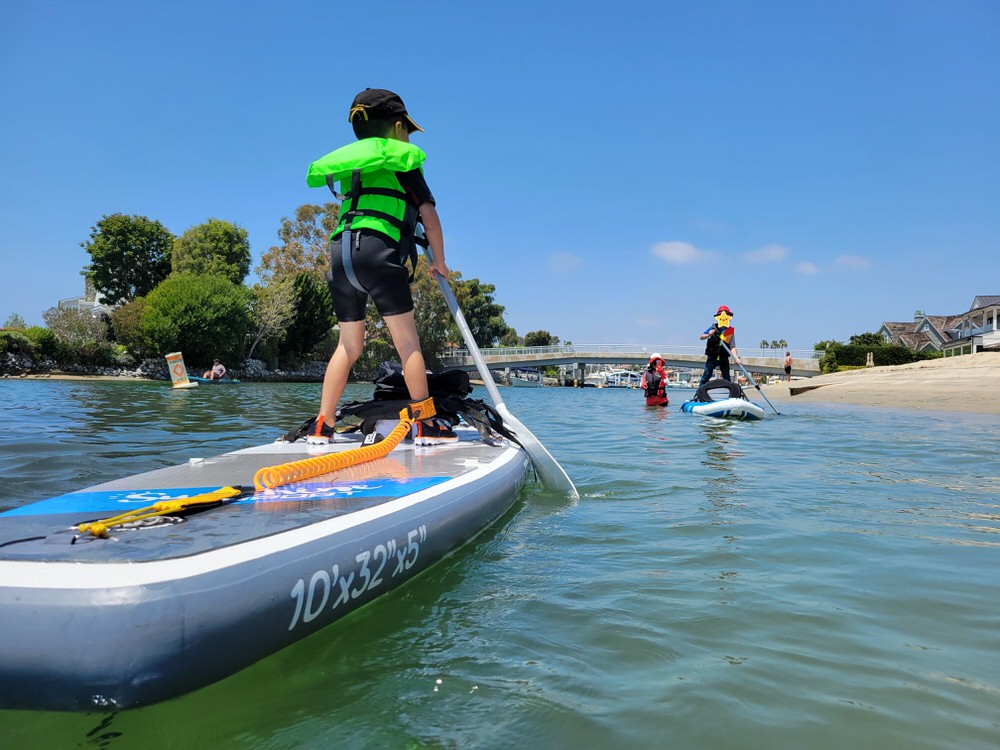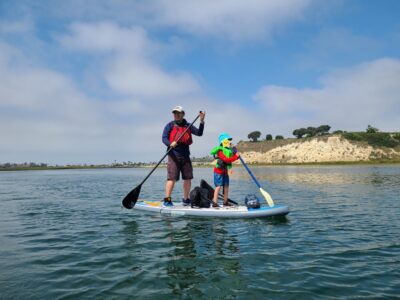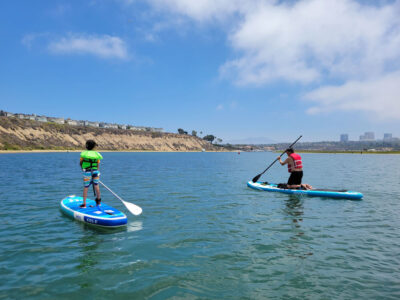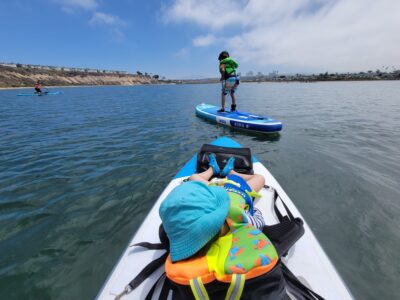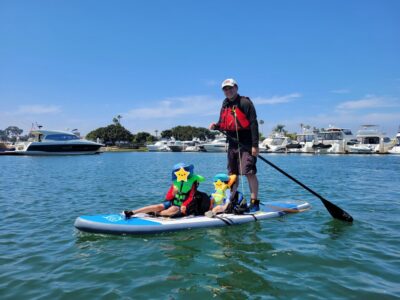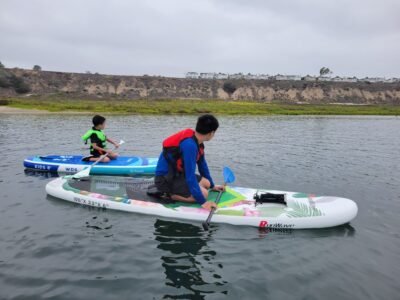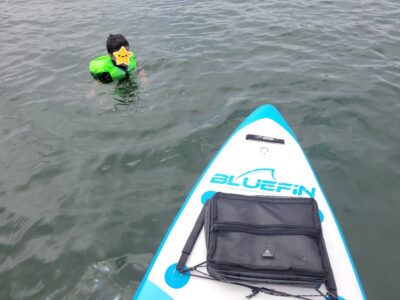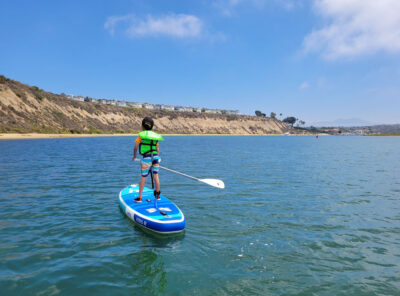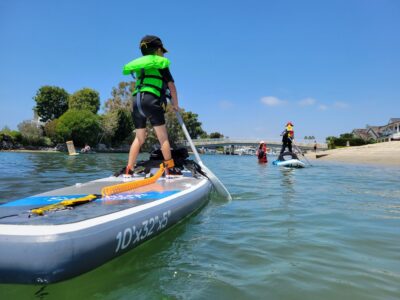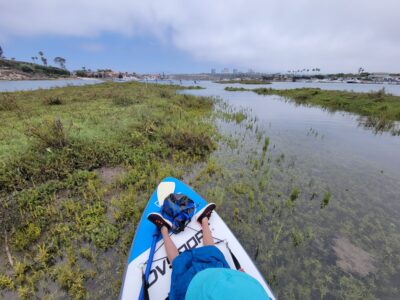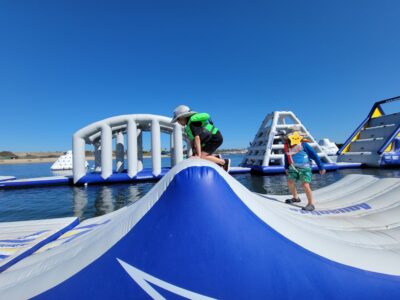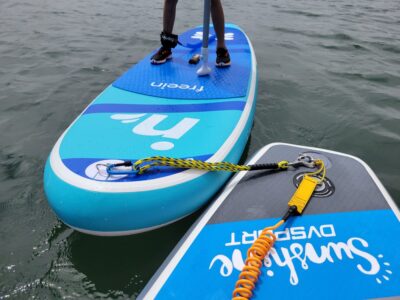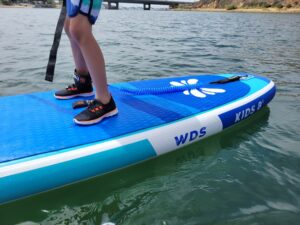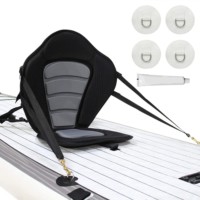Contents
Family Fun with iSUPs
Many parents have asked me over the years how my two, older children (six and two years old at the time) started paddle boarding when their own kids were still too scared to get into the water. Honestly, I am not sure nor an expert in this field, but I do attribute taking them at an early age being key. The idea is simple: When I previously exposed them to hiking in their early years, they got used to the elements, their curiosity of nature increased, and they had one-on-one time with their parents free of technology and distractions. They have become passionate hikers since. But… that did not happen overnight and exercising patience (with some bribery and/or an exciting goal) was paramount. Force them to do something they do not want or are not yet comfortable doing, and you may have unintentionally caused them to lose interest.
Tip: Do not force kids to do something they do not want or are not yet comfortable doing. Otherwise, they may no longer find it fun and lose interest.
How To Paddle With Kids
Here are the tips I give friends and family looking to take their children for the first time.
Paddle Boarding Basics & Tips
We urge you to learn the basics to minimize injury, get more enjoyment out of your iSUP, and be familiar with how to choose and maintain your board so it will last longer.
Must Read: Stand Up Paddle Boarding Basics & Tips – How to choose, prepare, maintain, and paddle Inflatable Boards (iSUP)
Get comfortable yourself first
- Confidence breeds confidence. If you do not know how to operate an iSUP, teaching your child may be difficult
- If you are too confused about the basics, you may get yourself into a situation where you cannot effectively go rescue your child in an emergency
- Start by learning the basics of paddle boarding
Get your child comfortable
This is key! Get your kid comfortable — if he or she freaks out, do not push it!
- Get a properly-fitting life vest for the kid and have him float in the pool to see that he will not sink. I also had him learn to turn onto his back and keep his head above the water
- Bought both my children a 3mm wetsuit so they would not get too cold in the water. Wetsuits add a small degree of buoyancy
- Attaching the board’s safety leash to his ankle gave him added confidence that he would not float away from the iSUP
- CAUTION: Be VERY mindful that it could potentially get the kid tangled. Be on the lookout in case you have to rescue him. Ideally, show him how to pull the quick-release and practice it often and with eyes closed
- I had him sit at the front of the iSUP to enjoy the view and play with the water. I also added a kayak seat for his comfort
- Consider getting your child a paddle board specifically made for children, such as the Freein 8′ Kids iSUP
- As my son became more comfortable, I had him get into the water with lots of positive encouragement. That eventually led to him wanting to learn how to swim!
Take it slow
- Before having him stand up, I had him practice on the iSUP on solid land and go over the basics (stance, balance, etc.)
- Later, I gave him the opportunity to stand up and gently paddle at his own pace. I kept him stable as much as I could (by holding onto just the life vest) until he was able to balance himself out
- Be patient and encouraging! If he does not get it today, try again another day or take a break
- If possible, stay in calm waters (like a lake) instead of choppy ones like the ocean or river
- Teach your child how to safely fall into the water and get back onto the board
Make it fun
- Nothing encourages a child more to keep on learning than having fun with the activity!
- I gave my kid some fun goals:
- How many seagrass or seaweed can you collect? How much faster can you paddle than your friend? Is there a landmark he wants to see up close? Spot some wildlife!
- We often paddled towards some interesting places and even made brief land stops to get some ice cream!
- After we were done, we sometimes went to get some frozen yogurt
- If the child gets tired, consider having him take a break or tow him (we love the Dolibest Tow Rope to pull another board without an annoying bungee effect)
Create reachable milestones
- Part of giving positive encouragement is to create milestones that can be reached by the child
- Include short- and long-term goals along with rewards for reaching them
- Ultimate gift I promised my son: “Keep improving and get your own iSUP one day.” And he did: Freein 8′ Kids (2022)
Other Tips
Safety Considerations
- Always make sure the child wears a properly-fitting, secured life vest
- Never let the child be alone. Ideally, paddle in a group so other adults could help in an emergency
- Dress the kid properly for the weather and water temperature
- Attach the safety leash to the child’s ankle, if age appropriate
- Be aware that he could get tangled in it. Practice pulling the quick-release by touch without looking and with eyes closed
Life Vests
Life Jackets are essential for your safety and can even be required by law. See our guide on Personal Flotation Devices (PFD): How To Choose A Life Vest For Kayaking, Paddle Boarding.
Conversion to Kayak
Adding a seat is a VERY nice way of converting a stand up paddle board (whether inflatable or not) into a relaxing, single or tandem-seated kayak. All you need are four (4) D-Rings affixed to the iSUP that you attach the seat onto.
Guide: How To Add D-Rings to Convert an iSUP into a Kayak. It is easier than you may think.
A Kayak Conversion Kit can be purchased (like the South Bay Kayak Kit that includes 4 D-Rings and PVC glue). Molded, foam seats provide better comfort.
Kayak Accessories
Some kayak seats (like the South Bay Board) come with a storage zipper pocket attached to the back to store snacks, drinking water, windbreaker jacket, and other accessories. They usually can be removed and secured to the front bungee cords, too. The bag generally is water resistant (fine against splashes) but NOT waterproof (cannot be submerged) — so, keep that in mind if you plan on bringing things that cannot get wet.
Where To Buy
- Freein Kids
- Emergency Accessories
- Whistle: Koala Windstorm | Strobe: ust See-Me 2.0 | Knife: Gerber EVO Jr.
- Accessories
- Wetsuits for Children (3mm)
- Electric iSUP Pumps
- Battery Built-In: Dr. Meter / Furein / BeWellAero (Heavy-duty and fast)
- 12V Cigarette Plug: Samengd / Vachan
- Garden Spray Hose for rinsing off
- Dolibest Tow Rope (to more easily tow another board without bungee effect)
- Bungee Deck to hold accessories and paddle
- iSUP Safety Leash | Oceanbroad SUP/Kayak Paddle | YYST Paddle Holder Clip
- Life Vests
- See our guide: How To Choose A Life Vest For Kayaking, Paddle Boarding
Related Posts
- How-To Guides:
- Stand Up Paddle Boarding Basics & Tips: How to paddle, prepare, maintain, and choose Inflatable Boards (iSUP)
- How To Choose A Life Vest For Kayaking, Paddle Boarding
- How To Add D-Rings to Convert an iSUP into a Kayak. It is easier than you may think
- Reviews: Inflatable Stand Up Paddle Board
- Freein Kids 8′ (2022): Made specifically for children and light adults
- DvSport Sunshine: One of my favorites. A bit more advanced, dual-layer iSUP
- Runwave Kohala: Less expensive, single layer iSUP board that many of my friends have recommended. It is a best-selling beginner board
- Runwave Lotus Flower: Very light, dual layer iSUP with a colorful, flower-inspired art design. It is a tad more stable than the Runwave Kohala
- Abysup SUP123: Dual layer, lighter iSUP that is slightly more advanced than the Runwave Kohala

